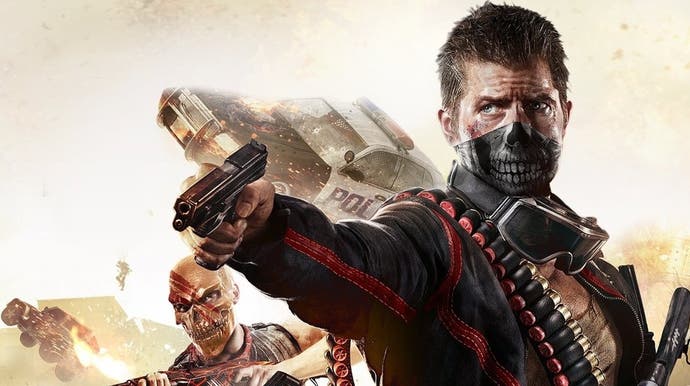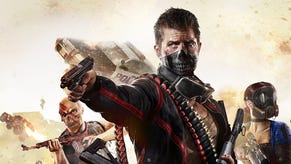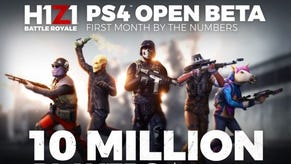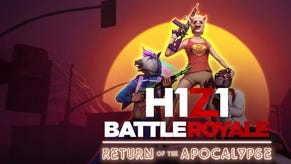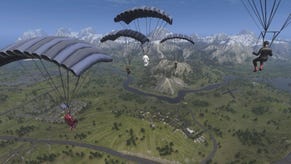H1Z1 on PS4 offers Pro owners a gameplay advantage
The 'supercharged' console delivers higher frame-rates and smoother action.
Fortnite's domination of the console space shows no sign of flagging, but we will be receiving a glut of new Battle Royale games in the console space over the next few months - and the deluge begins on PlayStation 4 with the release of H1Z1, a port of one of the very first examples of the genre. It's fascinating to stack it up against the competition: the similarities with PUBG are legion (owing to Playerunknown working on both titles) but the execution is very, very different. For starters, developer Daybreak Games is targeting 60 frames per second on console, similar to Epic's Fortnite and up to double the performance of PUBG on Xbox One.
It's all part of an overall strategy that sees the developer strip back the experience to better fit the console space and perhaps their own technology. In terms of tweaking the established formula, PUBG's detailed inventory system and customisation mechanics are pared back to a simple radial dial, with fixed configurations per weapon. The inclusion of vehicles and points of interest on the mini-map makes the action flow faster too - the aimless wandering of PUBG is kept down to a minimum, encounters with other players are more frequent in the early stages and often take place in more interesting locales. Weapons drops are also highlighted on the map, attracting more players and resulting in some action-packed dust-ups.
Also worthy of praise is the inclusion of a combat training mode. It takes place on much smaller maps, offers infinite respawning (with just a two-second load time) and instantly tools you up with a pistol, machinegun and shotgun. There are still plenty of decent upgrades to hunt down, but it's really all about getting something like a standard deathmatch going within the confines of a Battle Royale set-up. There are no scores as such, but it's great for learning the ropes and honing your skills. It's fun enough that with some minor tweaking it could even become a viable secondary mode to the main event.
But the overall sense of a stripped-back PUBG extends to the aesthetics too, which are somewhat threadbare to say the least. The developer's bespoke ForgeLight engine has some console lineage, having featured in PlanetSide 2 on PlayStation 4, but aside from some nice bloom, water and reflection effects, the overall look comes across as rather unsophisticated compared to both PUBG and Fortnite. The basic (if any) anti-aliasing is a case in point - geometry pops heavily and in-surface aliasing produces some obvious, distracting moire patterns on some buildings. At least foliage looks pretty decent, without the kind of shimmer and sub-pixel break-up seen in other titles. However, shading is also rather basic with little in the way of indirect lighting, especially noticeable with interior scenes that often resemble a PS2-era game.
The often simple visuals are all the more surprising bearing in mind the core rendering set-up. Only PlayStation 4 Pro receives native 1080p (the machine's 4K output simply upscales the basic full HD resolution), while the standard console renders at a curious 1696x954. It serves to highlight that unlike its competitors, H1Z1 isn't running on a state-of-the-art triple-A engine and the meagre pixel-counts are almost certainly in service of the game's intended 60 frames per second target. The high frame-rate is a key point of differentiation with PUBG, and certainly on PlayStation 4 Pro, it's a transformative experience - almost, but not quite, PC-like.
To cut to the chase, the Pro runs mostly within a 50-60fps performance window, which drops to 40-50fps on the base console. It may not sound like much on paper, but the end result is cleaner, crisper response from the controls and a clear advantage for owners of the enhanced hardware. Looking more closely at how frames are delivered in combat, base users get more dips to the 50ms frame-time mark, again giving the feeling of a less responsive experience. In a game targeting low latency controls with all-or-nothing shoot-outs, this is clearly not ideal.
Elsewhere, dividing points between standard and Pro consoles are minimal. Setting up a multiplayer game and having one console spectate the user playing on the other, we can get good comparisons of gameplay footage. Resolution and performance aside, the textures look the same, short to medium range pop-in is similar, foliage density and effects work are also a match. Curiously though, skybox rendering is quite different in almost all circumstances, and in some scenarios, the Pro appears to render far-off detail in situations where the base system delivers nothing. Whether this is an actual advantage for the more powerful machine, or simply randomised atmospheric conditions between all users remains to be seen. Certainly though, it has no impact on the way the game plays - the Pro's advantages are down to pixel count and frame-rate alone.
It's worth remembering that H1Z1 is still beta code and the chances are that you will encounter some strange bugs, like landing on your head in a quad-bike and being unable to exit the vehicle until it bursts into flames and kills you. I also encountered occasional instances of the server rooting you to the spot, teleporting you back to where it thinks you ought to be should you move. There are also loading time issues - at the very least, you're looking at 30 seconds moving to the lobby, then a further wait once the game begins - the actual time spent on loading seems to vary somewhat. The situation has certainly improved since last week though, where loading took much longer and sometimes only some of your team would actually end up in-game. Right now, if any weirdness kicks in, the best advice is to quit the application entirely and reload.
It's early days for H1Z1 and I'd hope to see improvements to stability and more of an effort to equalise performance between the base and Pro systems - in a competitive console shooter, the notion of an elite minority having a clear gameplay advantage over everyone else doesn't seem fair. Getting both systems as close as possible to a locked 60fps should be the target going forward, though we'd also welcome some attempts to tidy up some of the title's more basic areas. As things stand, don't go into this one expecting super-smooth performance and triple-A quality visuals - but the Battle Royale formula remains compelling and H1Z1 is still plenty of fun to play.
